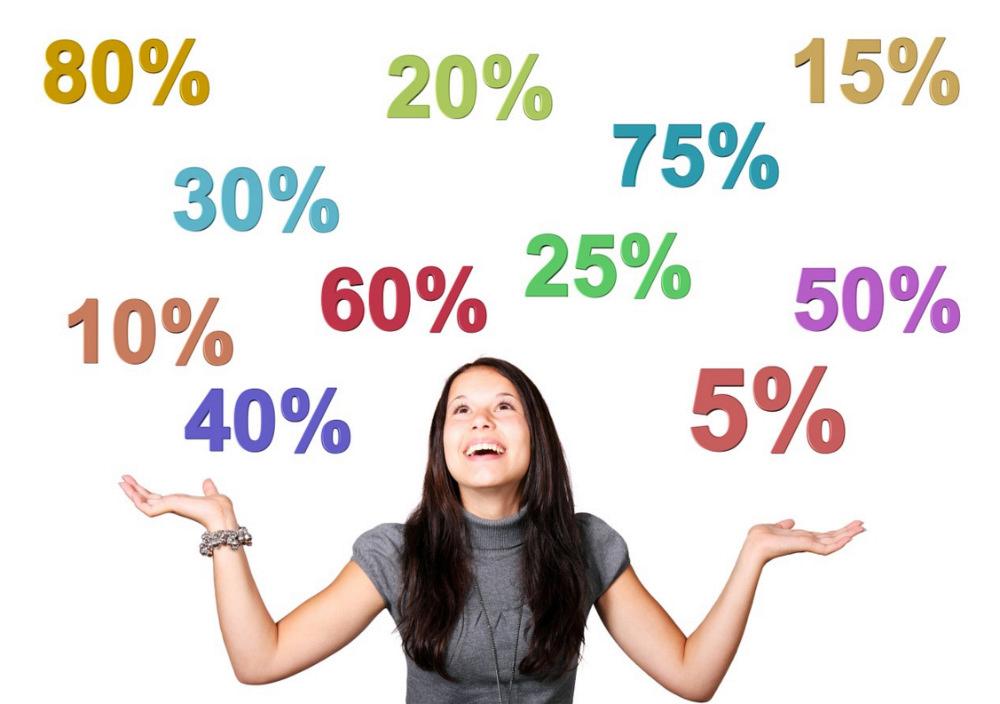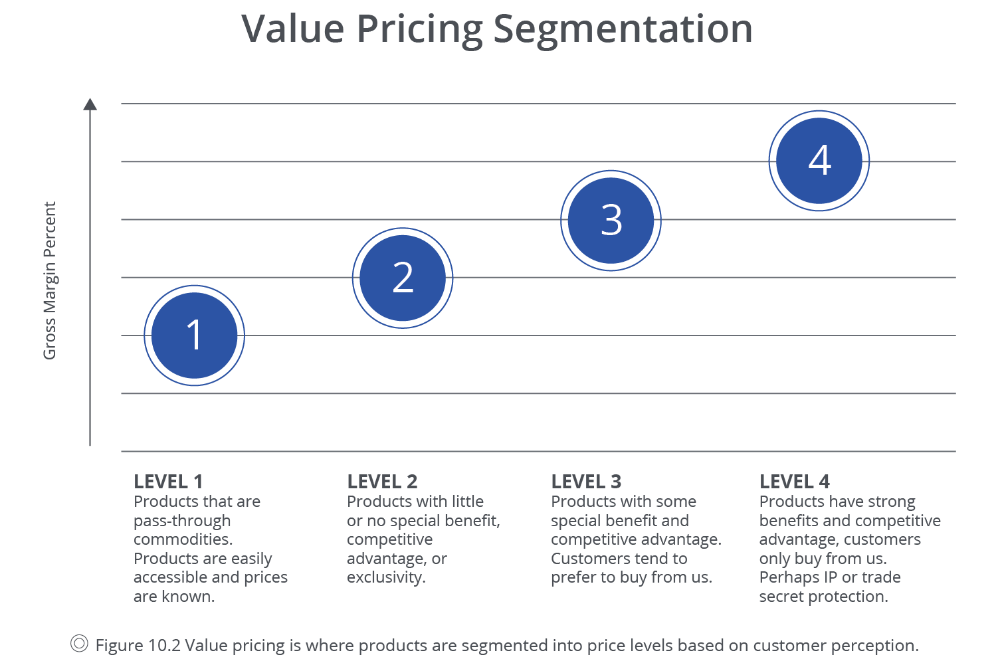Co-founder
- FMA
- The Fabricator
- FABTECH
- Canadian Metalworking
Categories
- Additive Manufacturing
- Aluminum Welding
- Arc Welding
- Assembly and Joining
- Automation and Robotics
- Bending and Forming
- Consumables
- Cutting and Weld Prep
- Electric Vehicles
- En Español
- Finishing
- Hydroforming
- Laser Cutting
- Laser Welding
- Machining
- Manufacturing Software
- Materials Handling
- Metals/Materials
- Oxyfuel Cutting
- Plasma Cutting
- Power Tools
- Punching and Other Holemaking
- Roll Forming
- Safety
- Sawing
- Shearing
- Shop Management
- Testing and Measuring
- Tube and Pipe Fabrication
- Tube and Pipe Production
- Waterjet Cutting
Industry Directory
Webcasts
Podcasts
FAB 40
Advertise
Subscribe
Account Login
Search
Is your pricing strategy hurting your business?
- By Chip Burnham
- December 4, 2018
- Article
- Shop Management
Prices that are too high will lose a customer much faster than low prices will attract them. A solid pricing strategy is fundamental to retaining customers and profits.
With thousands of items to price, some manufacturers apply a standard profit percentage across nearly everything they sell, applying a special price only when quoting a custom piece of equipment, or after they receive a complaint. Applying a flat profit percentage runs the risk of overpricing a commodity and underpricing an exclusive product.
Commodities are goods interchangeable with competitive goods; they are widely available; and the importance of factors other than price and availability (such as brand) are diminished. No. 6 bolts, No. 2 wood pencils, and 450-lumen LED light bulbs are commodities. They are easily sourced and pricing is generally known. If you try to apply too much profit to these items, your customer might notice and then assume all of your products are overpriced.
Exclusive items are goods available only from you. Devices that are patented or manufactured using trade secrets are examples of exclusive items. Some products and services fall between commodity and exclusivity.
The Goal
Your primary pricing goal is to grow company profitability and customer loyalty. Customer loyalty occurs when your customer buys all they can from you, is impervious to competition, and recommends you to others. A secondary pricing goal is to create a system that allows you to quickly price new products appropriately.
Basic Value Pricing Model
Value pricing can get very complex. However, whether you are General Electric or a small fabrication shop, the approach can be boiled down to this: Group similar items together based on their value to the customer and apply profit on that value. Manufacturers have too many items to price to do so individually, so try to use only three or four groups and create a set of rules that allow quick categorization and pricing.
• Level 1: Commodities you typically buy and resell. These commodity items are easy to find elsewhere, and brand carries almost no value. Your gross margin (GM)—selling price, minus the cost of goods sold, divided by selling price—percentage for this level of products will end up below your company’s average GM percentage. It is best to think in terms of gross margin percentage rather than markup percentage because gross margin translates much more directly to the income statement. Ensure pricing is competitive with the street price (not necessarily the lowest, but competitive). Pricing these products too high might make buyers question all of your pricing. Examples are bungee cords, office supplies, and common fasteners.
• Level 2: You make, buy, or private-label these products. Your offerings have little or no exclusive customer benefits; little or no competitive advantage; no intellectual property (IP) protection, such as trademarks or patents; and can be sourced elsewhere if the customer is willing to put in the time to research. Target the upper range of competitive pricing for these products or services. Examples are replacement lights for the current-model year and uncommon fasteners.
• Level 3: You make or private-label these products, or you buy them from a source that is hard to find. These products have some perceived benefits and competitive advantages, and they should have a price point slightly higher than competitors’. A level 3 example is an important but not IP-protected replacement part that can cause the customer problems if it fails, such as a specific solenoid or gear. You might choose to combine level 3 with level 2, if your offerings are fairly straightforward.
• Level 4: You are clearly the vendor of choice for these products, either through recommendation or by a directed-buy mandate. The products have strong, unique benefits and competitive advantages. They might have patent protection or be manufactured with an exclusive capability that few companies possess. These products might be available only from you. The value is high, so price these products with a higher GM percentage. Level 4 examples are items that void the warranty if the system is serviced by non-OEM-certified technicians or parts replaced by non-OEM parts. They might be patented items, custom PC boards, or other critical custom components.
Your marketplace might accept GM percentages of 15, 25, 40, and 60 percent for level 1 through 4, respectively, or it might accept margins far less. The point is, select percentages that ascend logically.
Execution Options
Announce pricing adjustments, not increases, and point out those items where prices have gone down. Create bundles and programs that are of value to your customers.
- Raise prices on level 3 and 4 items, while lowering or holding prices on highly visible level 1 and 2 items.
- If you find you are not winning business on level 1 and 2 items, consider bundling them with level 3 or 4 to create attractive packages.
- If you find certain customers are receiving discounts on level 4 products, but never buy anything else, regardless of your offers, consider eliminating the discounts. They have shown you they will buy only the products from you they cannot buy elsewhere.
- Create a rewards program that entices customers to buy all four levels of product from you.
- Approach customers you have lost with your new pricing programs. Consider special discounts on their next order to encourage them to regain the habit of buying from you again.
Test for Impact
Adjusting pricing is a scary thing. You can reduce your fear by testing for impact before you launch. Will your efforts increase company profitability? Will they be accepted by the market and increase customer loyalty?
To check for profitability impact, run a cross-section of last year’s sales through this year’s pricing model; be sure to compensate for discounts and giveaways. Has your profitability improved? Then, create your messaging and scripts and run them by knowledgeable sales and service people within your company to get their feedback. Will customers think the price adjustments are reasonable? Will the market react positively? If things are looking good, then try it out on a few customers before wide-scale launch.
Follow Your Rules
Once you have a value pricing model in place, teach your team to follow your rules. When they are faced with pricing a new item, they should identify which group the item falls into, research competitive pricing if the item has a large profit contribution potential, and apply the appropriate GM percentage. Your rules should help your team place new items into the appropriate level and apply the corresponding percentage.
Although you will always find exceptions, creating value-based product groups and creating rules for pricing will help you retain profits and customers.
About the Author

Chip Burnham
(833) 667-7889
subscribe now

The Fabricator is North America's leading magazine for the metal forming and fabricating industry. The magazine delivers the news, technical articles, and case histories that enable fabricators to do their jobs more efficiently. The Fabricator has served the industry since 1970.
start your free subscription- Stay connected from anywhere

Easily access valuable industry resources now with full access to the digital edition of The Fabricator.

Easily access valuable industry resources now with full access to the digital edition of The Welder.

Easily access valuable industry resources now with full access to the digital edition of The Tube and Pipe Journal.
- Podcasting
- Podcast:
- The Fabricator Podcast
- Published:
- 04/16/2024
- Running Time:
- 63:29
In this episode of The Fabricator Podcast, Caleb Chamberlain, co-founder and CEO of OSH Cut, discusses his company’s...
- Industry Events
16th Annual Safety Conference
- April 30 - May 1, 2024
- Elgin,
Pipe and Tube Conference
- May 21 - 22, 2024
- Omaha, NE
World-Class Roll Forming Workshop
- June 5 - 6, 2024
- Louisville, KY
Advanced Laser Application Workshop
- June 25 - 27, 2024
- Novi, MI

































